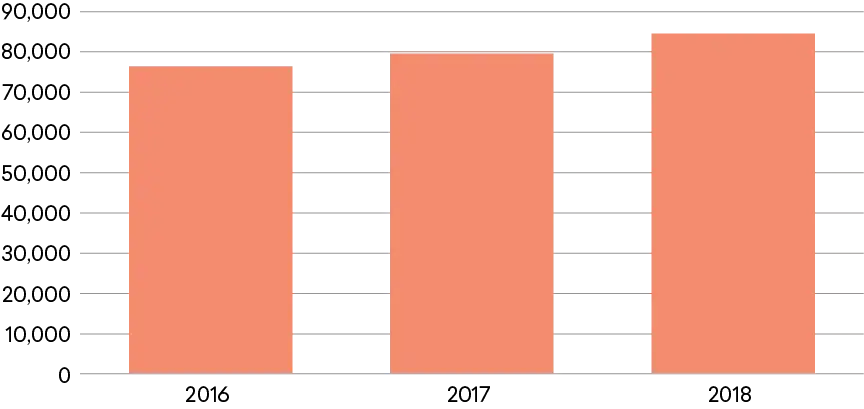Challenges of International Scientific Partnerships

Although the benefits of international partnerships are numerous and significant, they can also be accompanied by additional costs, both fiscal and intangible. Further, certain categories of research, especially classified and dual-use research with direct application to military use, should not be performed as open science and should require scientists to be American citizens due to national security concerns.139
Challenges for international research partnerships can include the difficulty of reconciling two or more incommensurate planning or funding mechanisms; the necessity of satisfying multiple funders and government oversight bodies; complications of sharing decision-making, management, and control; ethical concerns; cultural differences; concerns of equality and fairness, especially along racial and gender lines; reduced flexibility and agility; balancing political and scientific interests; public awareness, participation, and education; increased complexity of ownership and data rights, including genetic resources and sequences; a growing need for secure research platforms that allow for distributed research; and requirements of export control regimes. These challenges need to be recognized and addressed up front and the time spent in managing these complications needs to be justified by the enhanced scientific return enabled by the international partnership. The challenges posed by the COVID-19 pandemic only serve to underscore this need (see What Happens After COVID-19?).
More detailed discussion of the challenges of international scientific collaborations are presented in the forthcoming CISP reports on international large-scale science and collaborations with emerging science partners.
Scientific collaboration can, and should, continue between citizens of countries whose governments have strained diplomatic relations for the benefits of international collaboration already described. However, in circumstances of political strain, special care may be needed to protect the interests of the United States as well as research integrity (See Mitigating the Effects of Strained Diplomatic Relations on Scientific Partnerships).
What Happens After COVID-19?
The Challenges for International Scientific Partnerships project started its work well before the COVID-19 pandemic swept across nearly every nation on Earth. As this report goes to print, the pandemic is accelerating and, indeed, the infection rate is rapidly rising in the United States and elsewhere. While there are numerous promising efforts underway to develop effective vaccines, none is yet available, and their effectiveness is not yet known. Health scientists are continuing to learn about the virus, how it mutates, how it can be transmitted, the symptoms and consequences of infection, and effective treatments.
SPECIAL SECTION – Mitigating the Effects of Strained Diplomatic Relations on Scientific Partnerships
U.S. Collaboration with China
The topic of U.S. collaboration with China, a country that is approaching U.S. overall R&D funding levels when adjusted for purchasing power parity, merits special attention.142 China has fully recognized the importance of science and technology to its economic and national security and is vigorously acting on it.143 In part because of China’s extensive R&D investments and increased capabilities, more U.S. science and engineering articles are now coauthored with Chinese researchers than with researchers from any other country. In 2018, approximately 10 percent of all U.S. S&E articles had Chinese coauthors, and coauthorship rates have risen dramatically over the past twenty-five years (Figure 4).144 Much of the coauthoring is a consequence of Chinese researchers having performed their doctoral studies and/or postdoctoral research in the United States. Such collaborations are especially vital for approaching global problems like infectious diseases, climate change, and air and water pollution.

Source: National Science Board, Publications Output: U.S. Trends and International Comparisons (Alexandria, Va.: National Science Foundation, 2019).
As China’s research enterprise continues to grow stronger—increasing its scientific capabilities and making major advances—it is critical that the United States be engaged with this partner and competitor. To conduct the best, world-leading fundamental research that is openly published, U.S. scientists will frequently need to collaborate with Chinese scientists. To understand the global scientific community, the United States must be aware of China’s growing role in this community and be sensitive to fast-moving advances. The United States cannot afford to ignore China’s emergence as a leading investor with an impressive national research enterprise. It is vital that the United States not be caught by surprise by a major advance made in China. If the United States puts up curtains, China will as well.
The U.S. intelligence community has indicated, however, that China is using some of its collaborations and nationals studying in the United States to gain access to U.S. intellectual property and ideas in illegal and unethical ways.145 In addition, some U.S. scientists have failed to provide the required reports to U.S. government funding agencies of collaborations with Chinese nationals and participation in Chinese talent-recruitment programs.146 For example, NIH has reported finding nine instances of peer review confidentiality violations among 154 total violation findings, of which the remainder were failures to make required disclosures.147 While any breach of confidentiality could cause serious national security concerns, it is important to put these numbers in context. We estimate that there are fifty thousand doctorate scientists and engineers who came from China living in the United States presently. Of these, the number of biomedical doctorate holders is of the order of ten thousand.
Some in Congress and the executive branch have proposed severe limits on collaborations between U.S. and Chinese scientists and engineers in “strategic” research fields, as well as restrictions on the education of Chinese nationals by U.S. higher education institutions. For example, in a December 2018 memorandum, the deputy secretary of energy announced that the DOE would be developing a Science and Technology Risk Matrix to provide “clear guidance on areas where research collaboration with specific sensitive countries,” including China, is prohibited.148 DOE National Laboratories would be prohibited from conducting international research collaborations in specific areas identified by the S&T Risk Matrix. DOE grant, fellowship, and center recipients would be prohibited from using U.S. tax dollars to conduct international research collaborations or support sensitive-country foreign nationals in those areas. Up to this point, the DOE is showing caution in implementing this approach.149
There is at this moment significant tension in the overall U.S.-Chinese relationship. On May 29, 2020, the U.S. government issued the Proclamation on the Suspension of Entry as Nonimmigrants of Certain Students and Researchers from the People’s Republic of China.150 That proclamation contains the statement,
The entry into the United States as a nonimmigrant of any national of the PRC seeking to enter the United States pursuant to an F or J visa to study or conduct research in the United States, except for a student seeking to pursue undergraduate study, and who either receives funding from or who currently is employed by, studies at, or conducts research at or on behalf of, or has been employed by, studied at, or conducted research at or on behalf of, an entity in the PRC that implements or supports the PRC’s “military-civil fusion strategy” is hereby suspended and limited subject to section 2 of this proclamation. For the purposes of this proclamation, the term “military-civil fusion strategy” means actions by or at the behest of the PRC to acquire and divert foreign technologies, specifically critical and emerging technologies, to incorporate into and advance the PRC’s military capabilities.
At the time of this writing, no entity list has been published, and it is not clear how this proclamation will be implemented.
The DOE memorandum and the proclamation have the potential to cause considerable harm to the nation’s scientific research, economy, and national security. Students from China constitute a considerable fraction of those performing graduate studies in engineering, physics, and information technology in U.S. universities. Between 2000 and 2017, for example, they received 32 percent of all the doctorates awarded in science and engineering, 34 percent in engineering, 38 percent in physical sciences, and 36 percent in computer science.151 If they could not participate in university research in strategic research fields, U.S. research in those fields considered most important—including 5G, artificial intelligence, biotechnology, and materials science—would be slowed down considerably. The impact would be felt for years to come, as most Chinese students currently remain in the United States, where they form an important part of the permanent American S&T workforce (Figures 5A and 5B), frequently founding major companies and providing jobs.152 Prevention of collaborations with Chinese colleagues in these fields is also likely to slow down U.S. research, as is the case in materials science, where some of the high-quality advanced materials required are not available domestically.153

Source: National Science Board, Higher Education in Science and Engineering (Alexandria, Va.: National Science Foundation, 2019).

Source: National Science Board, Science and Engineering Labor Force (Alexandria, Va.: National Science Foundation, 2019).
The United States is thus faced with a dilemma. Collaboration with Chinese scientists and the education of Chinese students further U.S. science and technology significantly. Approximately 20 percent of those students earning doctorates in the United States return to China and contribute significantly to that country’s economic and military development.154 The approximately 80 percent choosing to remain in the United States constituted about one-quarter of the U.S. doctorate recipients between 2000 and 2017. These students contribute important benefits to the U.S. research enterprise, which ultimately contributes to our economy, the health of our people, and our national security. On balance, it seems wisest to continue educating graduate students from China while remaining vigilant regarding direct linkages to China’s military sector. In addition, it is essential that the U.S. science community remain engaged with the Chinese science community as it continues to expand and grow in strength. Yet the relatively infrequent instances of inappropriate behavior in collaborative research endeavors do endanger control of U.S. intellectual property and raise research ethics and national security concerns.
The United States must wisely balance and manage both collaboration and competition with China. Here, we offer recommendations for national policy as well as institutional actions to deal with the situation faced by academia and some other institutions performing fundamental, openly publishable research.155 These recommendations apply to the current U.S.-Chinese tensions, but they can also be extrapolated to apply to international collaborations more generally.
1. National Security Decision Directive (NSDD) 189, promulgated by President Reagan and reaffirmed by Secretary of State Condoleezza Rice, is U.S. policy regarding classification of research and should be adhered to strictly.156 NSDD 189 indicates that there should be no restrictions on fundamental research. If restrictions need be applied, the research should be classified. NSDD 189 provides the benefits of openness to fundamental research while also ensuring that other research is protected by well-established security procedures. Characterizations such as “sensitive but unclassified” should not be used for government-funded university research. (Note: Specific institutional and principal investigator controls apply to dual-use research of concern in the life sciences.)157
2. Classification should be reserved for research directly linked to national security.
3. Collaboration should be particularly encouraged in compelling areas that promote global health and well-being, such as infectious diseases, climate change, and air and water pollution.
4. U.S. visa policies and practices should encourage Chinese nationals and other foreign citizens both to study in the United States and to continue to reside in the United States following their studies, as this strengthens the U.S. research enterprise. Yet the visa process is the appropriate barrier for those whose entry and education here are determined to be an unacceptable risk to national security.
5. American universities should ensure strict adherence to their conflict of interest, conflict of commitment, and required reporting policies. These institutions should ensure that their policies are clear so that faculty understand them. The same is true for government policies.
6. The leaders of the U.S. scientific community in various fields, including professional societies, should engage their Chinese colleagues to discuss universally agreed norms, ethical obligations, and standard practices that should guide the conduct of scientific collaborations in fundamental research between scientists from the United States and China.158